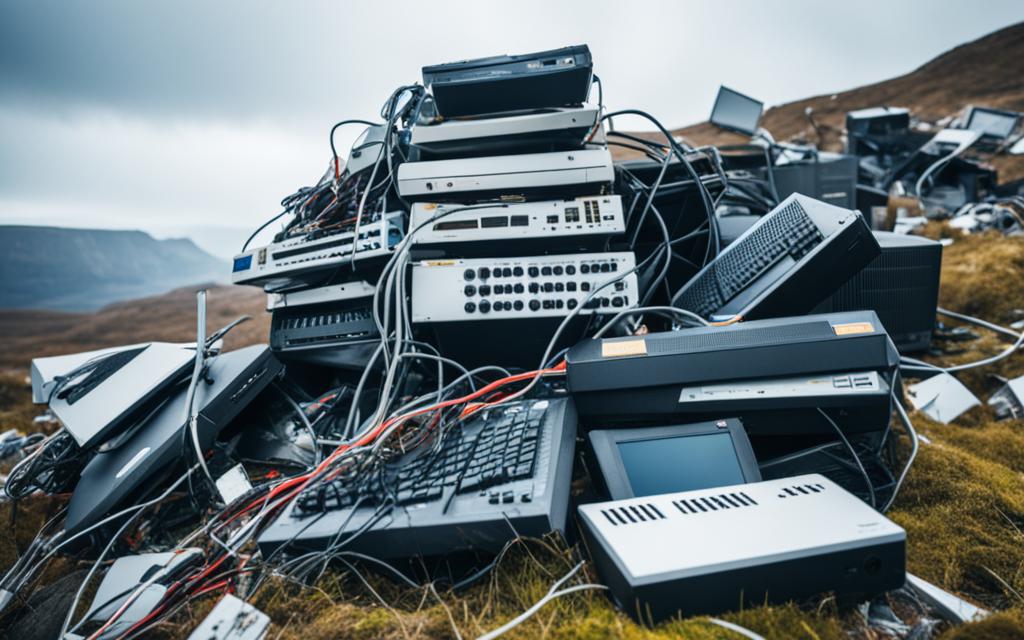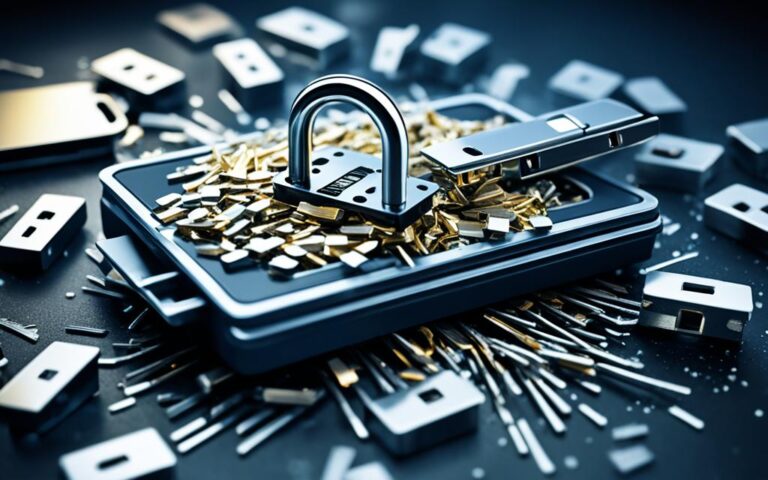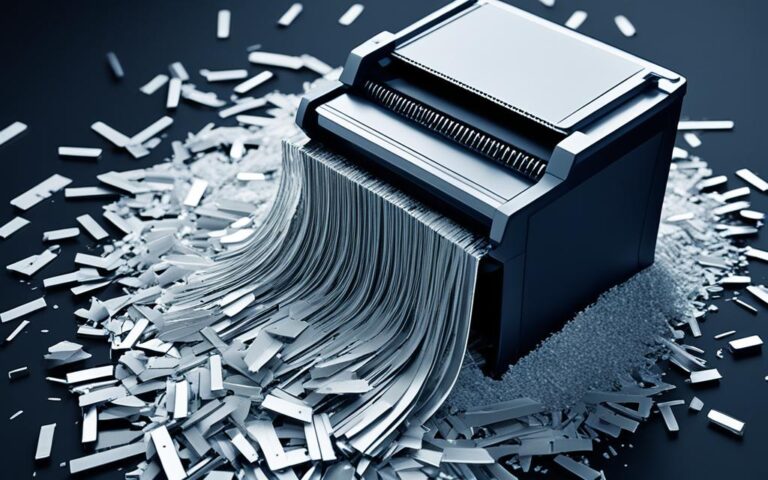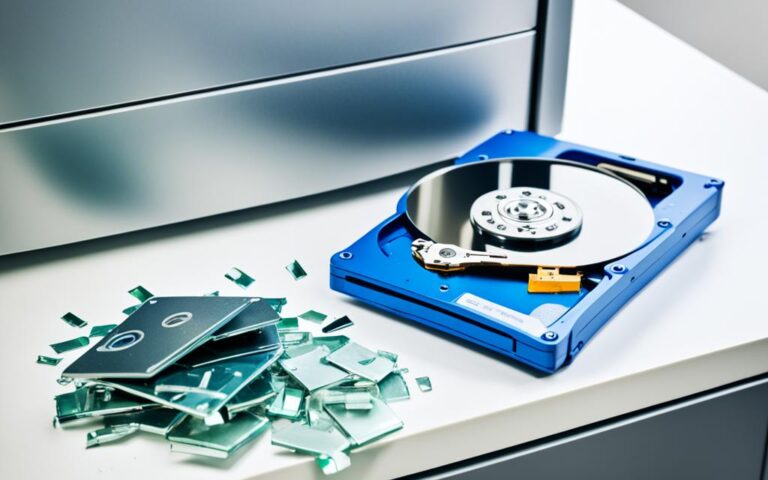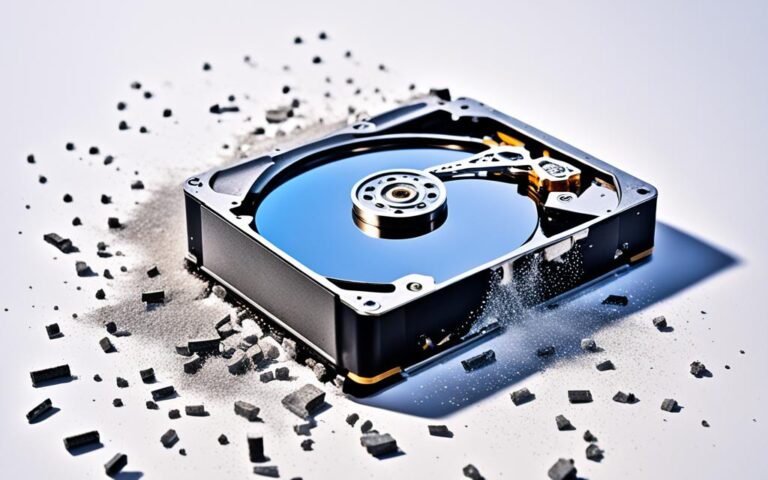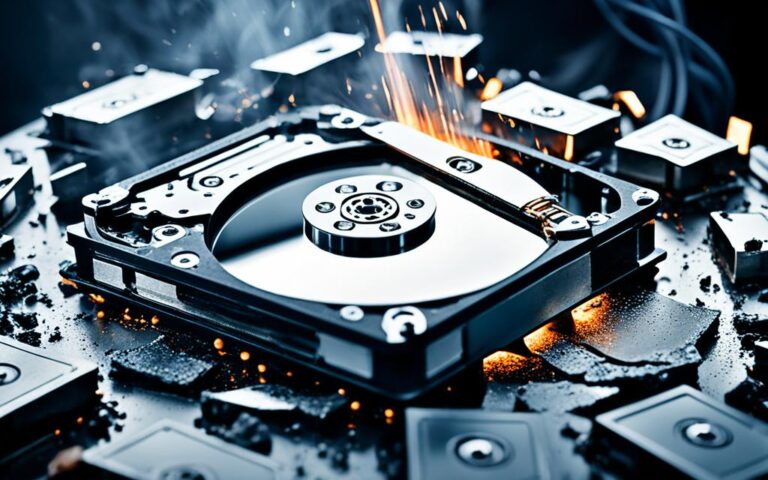Secure Electronic Disposal: A Guide for IT Professionals
Welcome to our comprehensive guide on secure electronic disposal, specifically tailored for IT professionals. In this guide, we will explore the importance of responsible electronic disposal, its environmental impact, and the steps and best practices to effectively recycle IT equipment. Whether you’re an IT manager, system administrator, or technology enthusiast, this guide aims to equip you with valuable insights and practical tips on how to ensure secure and environmentally friendly disposal of your electronic devices.
Why Recycle IT Equipment?
Recycling IT equipment offers numerous benefits that go beyond just disposing of electronic devices responsibly. By recycling, we can make a positive impact on the environment, address data security concerns, and even reap economic advantages.
Environmental Impact
Recycling IT equipment plays a significant role in reducing the environmental impact of electronic waste. When discarded in landfills, these devices contribute to pollution and resource depletion. By recycling, we can divert electronic waste from landfills and conserve valuable natural resources.
Data Security
Recycling IT equipment is crucial for safeguarding sensitive data and ensuring compliance with regulations such as GDPR and HIPAA. When devices reach the end of their lifecycle, recycling ensures that data is effectively destroyed, preventing potential data breaches and protecting the privacy of individuals and organizations alike.
Economic Benefits
Recycling IT equipment offers economic advantages as well. Valuable materials, such as precious metals and rare earth elements, can be recovered through recycling processes. This reduces the need for extracting these resources from the earth, leading to cost savings and reduced dependence on mining activities. Additionally, recycling IT equipment often incurs lower costs compared to disposal fees, making it a cost-effective solution for organizations.
By recycling IT equipment, we not only mitigate the environmental impact of electronic waste but also address data security concerns and harness economic benefits. It’s a win-win situation that allows us to protect the planet, protect sensitive information, and make a positive contribution to the economy.
Steps for Responsible IT Recycling
Responsible IT recycling entails a series of essential steps to ensure the proper disposal of electronic equipment while prioritizing environmental sustainability and data security. By following these steps, organizations can contribute to a greener future and safeguard sensitive information.
- Assessment and Inventory: Start by assessing and inventorying all IT equipment within your organization. Categorize the equipment based on recyclability and data sensitivity, enabling you to determine the appropriate disposal methods for each item.
- Data Sanitization: Prioritize data security by performing thorough data sanitization. Utilize certified software or physical destruction methods to ensure that all sensitive information is permanently removed from the equipment, mitigating the risk of data breaches.
- Choose a Reputable Recycler: Select a reputable recycler that prioritizes environmental sustainability and data security. Verify their credentials and certifications to ensure that they adhere to responsible recycling practices.
- Logistics and Transportation: Arrange proper packaging and transportation for the disposed equipment, ensuring compliance with transportation regulations. Safely transport the IT equipment to the recycling facility, minimizing the risk of damage or data exposure during transit.
- Documentation and Compliance: Maintain detailed records of the disposed equipment, including information such as make, model, and disposal method. Adhere to relevant environmental and data protection regulations, ensuring compliance throughout the recycling process.
- Environmentally Friendly Disposal: Dispose of the equipment in an environmentally friendly manner. Disassemble the equipment to separate recyclable components, such as metals and plastics. Follow local regulations for the proper disposal of non-recyclable or hazardous materials, reducing the environmental impact of electronic waste.
By following these steps, organizations can ensure responsible IT recycling while contributing to a sustainable future. Disposing of IT equipment responsibly not only safeguards the environment but also protects sensitive data from falling into the wrong hands.
Quote:
“Responsible IT recycling involves careful assessment, meticulous data sanitization, and the choice of a reputable recycler. By following these steps and adhering to environmental and data protection regulations, organizations can make a positive impact on both the planet and data security.”
– John Smith, Environmental Consultant
Best Practices for IT Recycling
Implementing best practices for IT recycling is crucial for maximizing environmental sustainability and data protection. By following these practices, organizations can contribute to a greener future while safeguarding sensitive information.
Educate employees about the importance of IT recycling and emphasize data security protocols to create a culture of responsible disposal. This awareness will ensure everyone understands their role in preserving the environment and preventing data breaches.
Implement asset management using tracking software to monitor the lifecycle of IT equipment. This allows for better inventory control, asset optimization, and identification of devices that are due for recycling or refurbishment.
Encourage reuse by donating usable equipment to schools, nonprofits, or community organizations. By extending the life of IT devices, you reduce electronic waste and provide valuable resources to those in need.
Stay informed about changes in recycling regulations and technologies to adapt your recycling practices accordingly. Regularly review industry updates, attend webinars, and participate in conferences to stay up to date with the latest advancements.
Continuously evaluate and update your IT recycling policies to enhance efficiency and compliance. Conduct regular audits to identify areas for improvement and ensure that your recycling practices align with current standards.
“By following these best practices, organizations can create a sustainable IT recycling program that protects the environment, safeguards data, and promotes continuous improvement.”
Benefits of Best Practices for IT Recycling
Implementing these best practices offers numerous benefits to organizations:
| Benefits | Description |
|---|---|
| Environmental sustainability | Reduced electronic waste, conservation of resources, and prevention of hazardous material leakage. |
| Data protection | Prevention of data breaches, compliance with data protection regulations such as GDPR and HIPAA. |
| Cost savings | Avoidance of disposal fees, recovery of valuable materials, and potential tax benefits for donations. |
| Reputation and CSR | Enhanced corporate social responsibility (CSR) practices, improved public perception, and potential partnerships with NGOs. |
Continuous Improvement and Innovation
Incorporating continuous improvement principles in your IT recycling practices allows for ongoing refinement and adaptation. Embrace feedback from employees, recyclers, and industry experts to identify potential areas for innovation.
Investigate emerging technologies, such as advanced materials recovery processes or efficient disassembly techniques, that can optimize recycling outcomes. Collaboration with recyclers and technology providers can yield valuable insights and lead to more sustainable solutions.
IT Recycling Legislation in the UK
In the United Kingdom, there are specific legislation and regulations in place to govern the recycling of IT equipment. Compliance with these regulations is crucial to ensure environmentally friendly disposal and data protection.
Waste Electrical and Electronic Equipment Regulations (WEEE)
The Waste Electrical and Electronic Equipment (WEEE) Regulations require businesses to responsibly recycle all their electrical and electronic waste. This regulation aims to reduce the environmental impact of electronic waste by promoting recycling and the recovery of valuable materials.
Data Protection Act
The Data Protection Act mandates the protection of personal data during IT equipment disposal. It ensures that organizations handle and dispose of data-containing devices securely to prevent the risk of data breaches and uphold individual privacy rights.
Environmental Permitting Regulations
The Environmental Permitting Regulations cover permits and authorizations for recycling certain types of WEEE. These regulations ensure that recycling facilities comply with necessary environmental standards and adhere to proper recycling processes.
Hazardous Waste Regulations
The Hazardous Waste Regulations in the UK govern the proper disposal of hazardous IT equipment, such as batteries and certain electronic components. It sets out guidelines and requirements for handling and disposing of hazardous waste to prevent harm to human health and the environment.
| Legislation | Description |
|---|---|
| Waste Electrical and Electronic Equipment Regulations (WEEE) | Requires responsible recycling of electronic waste |
| Data Protection Act | Mandates personal data protection during disposal |
| Environmental Permitting Regulations | Covers permits for recycling specific types of WEEE |
| Hazardous Waste Regulations | Governs the proper disposal of hazardous IT equipment |
By adhering to the IT recycling legislation in the UK, organizations can ensure the responsible disposal of IT equipment, minimize environmental impact, and protect sensitive data.
Tips for Recycling IT Equipment Safely and Securely
When it comes to IT equipment recycling, ensuring the safe and secure disposal of data is of utmost importance. By following these tips, you can protect your sensitive information and comply with the law.
- Wipe Data from Hard Drives: Before disposing of any IT equipment, it is crucial to wipe all data from hard drives and storage devices. Use certified data destruction methods to ensure complete data erasure and eliminate the risk of data breaches.
- Choose a Professional IT Recycling Company: Opt for a reputable and professional IT recycling company that specializes in secure data destruction. They have the expertise and resources to handle the disposal of your equipment securely. Look for a company that can provide a Certificate of Destruction as proof of data erasure.
- Label Waste Correctly: Proper labeling of waste is essential to ensure it is disposed of correctly. This includes labeling CRT monitors and TV sets as hazardous waste and disposing of them at authorized treatment facilities. Follow local regulations and guidelines for waste labeling and disposal.
By following these tips, you can ensure the safe recycling of your IT equipment, protecting your data and reducing environmental impact. Remember, partnering with a professional IT recycling company is key to achieving secure data destruction and complying with regulations.
“Proper disposal of IT equipment requires thorough data destruction and adherence to waste disposal regulations.”
| Key Tips for Secure IT Equipment Recycling | Benefits |
|---|---|
| Wipe Data from Hard Drives | – Eliminates the risk of data breaches – Protects sensitive information |
| Choose a Professional IT Recycling Company | – Ensures secure data destruction – Provides a Certificate of Destruction |
| Label Waste Correctly | – Ensures proper disposal of hazardous waste – Compliance with waste disposal regulations |
Conclusion
Proper IT recycling is a vital responsibility for organizations, and it offers significant benefits in terms of environmental sustainability and data protection. By following the steps outlined in this guide and adopting best practices, businesses can minimize their ecological footprint while safeguarding sensitive information.
Recycling IT equipment through professional IT disposal services ensures secure data destruction and compliance with relevant regulations. These disposal services employ advanced processes to safely handle and dispose of IT equipment, reducing the risk of data breaches and ensuring that valuable resources are not wasted.
By embracing responsible IT recycling, organizations not only contribute to a greener future but also demonstrate their commitment to ethical practices. Utilizing the proper disposal process for IT equipment, including data sanitization and environmentally friendly disposal, allows businesses to align with legal requirements while making a positive impact on the environment.
Ultimately, IT equipment recycling presents a win-win situation, offering environmental benefits through resource conservation and pollution reduction, as well as data security advantages. By prioritizing responsible IT recycling, organizations play a crucial role in creating a sustainable and secure digital landscape for the future.
FAQ
Why is it important to recycle IT equipment?
Recycling IT equipment is crucial for reducing electronic waste in landfills, conserving natural resources, and mitigating the release of hazardous substances into the environment. It also helps prevent data breaches and ensures compliance with data protection regulations.
What are the key steps for responsible IT recycling?
The key steps for responsible IT recycling include assessing and inventorying IT equipment, performing data sanitization, choosing a reputable recycler, arranging proper packaging and transportation, maintaining detailed records, and following environmentally friendly disposal methods.
How can I implement best practices for IT recycling?
Implementing best practices for IT recycling involves educating employees, implementing asset management, encouraging reuse, staying informed about recycling regulations and technologies, and regularly evaluating and updating IT recycling policies.
What legislation governs IT recycling in the UK?
In the UK, IT recycling is governed by the Waste Electrical and Electronic Equipment Regulations (WEEE), Data Protection Act, Environmental Permitting Regulations, and Hazardous Waste Regulations.
How can I recycle IT equipment safely and securely?
To recycle IT equipment safely and securely, it is essential to wipe all data using certified data destruction methods, use a professional IT recycling company that provides secure data destruction and a Certificate of Destruction, and dispose of CRT monitors and TV sets at authorized treatment facilities.
Why should organizations prioritize responsible IT recycling?
Organizations should prioritize responsible IT recycling to minimize their ecological footprint, protect sensitive information, ensure compliance with regulations, and contribute to environmental sustainability and data protection.
What are the benefits of recycling IT equipment?
Recycling IT equipment offers benefits such as reducing electronic waste, conserving natural resources, preventing data breaches, saving costs compared to disposal fees, and recovering valuable materials.
What is the disposal process for IT equipment?
The disposal process for IT equipment involves proper assessment and inventory, data sanitization, choosing a reputable recycler, arranging packaging and transportation, maintaining records, and disposing of equipment in an environmentally friendly manner.

